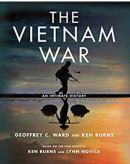Note. For purposes of safety, do not confuse cow-tipping with outhouse tipping. The latter can get you damaged by the outhouse occupant. If you do practice this sport of outhouse tipping, please be prepared to run like hell.
1. According to the International Organizations for the Advancement of Cow-tipping United for Pleasure (better known as IACTUP), cow-tipping has been in existence since the founding of the country. Previous to the coming of the English at Jamestown, the Indians participated in a practice called bear-tipping. Due to the high percentage of loss of life from the exercise, the Indians were absolutely thrilled when they discovered the English had brought several cows and a bull with them to the New World.
2. When the country was trying to decide who the first president would be, the founding fathers held a cow-tipping contest. George Washington beat out Thomas Jefferson by fifteen seconds. General Washington would have done a slam dunk of three minutes had he not dropped his false teeth and picked them up and put them back in his mouth. The teeth always needed considerable adjustment. Why did he waste time retrieving his teeth? He knew that the paparazzi would be taking photos and he wanted to look his best.
3. When Theodore Roosevelt went west, he participated in the sport. He not only tipped cows. He tipped waiters. He tipped waitresses. He even tipped buffalo. By the time he returned east, he had gotten himself into the Guinness Book of Records with forty-three cow-tips.
4. According to Hoyle’s Rules for Cow-tipping, proper attire must be worn for a successful cow-tipping affair: For the casual cow-tipping, broad-brimmed hat such as a cowboy hat, long-sleeved shirt, jeans and boots can be worn by both men and women. For the more formal affair, broad-brimmed hat, black tux and dress boots for the men. For the ladies, a gown of any color will do in addition to the hat and the boots.
5. It is essential that the prospective cow-tipper bring two bottles of whiskey to the arena. One for the cow-tipper, one for the cow.
6. Before the actual cow-tipping, identify the target of your affection. Is it a cow or is it a bull? To do this, approach said target from the rear, lift the tail and inspect the goodies. If a bull, please do not disturb the fellow. Back away slowly and leave him in peace. He may very well think you are a cow. Bulls are well-known for their poor eyesight.
7. When approaching the cow, watch your step. If you don’t, you may be up to your neck in manure. In 2012, thirty potential cow-tippers died from drowning in the stuff.
8. If you happen to hear loud noises during your cow-tipping, it probably is not a car backfiring. More than likely it is a the cow’s owner. He/she may very well be upset with you for cow-tipping without a license. Cow owners, better known in the local vernacular as cow havers, have been known for their excellent marksmanship when drawing a bead and firing on a potential cow-tipper. In most Western states, it is not against the law to damage a cow-tipper. IACTUP is lobbying to have the law changed. The Wyoming legislature in 2013 was the first state to cooperate. California may soon join Wyoming.
9. Cow-tipping has become so popular there is a movement to create a National Cow-tipping Hall of Fame.
10. A cow-tipping kit is now being sold for all those amateurs who may see this as a rite of passage into adulthood. Please follow the instructions exactly. The manufacturer will not be responsible for any deviations.

